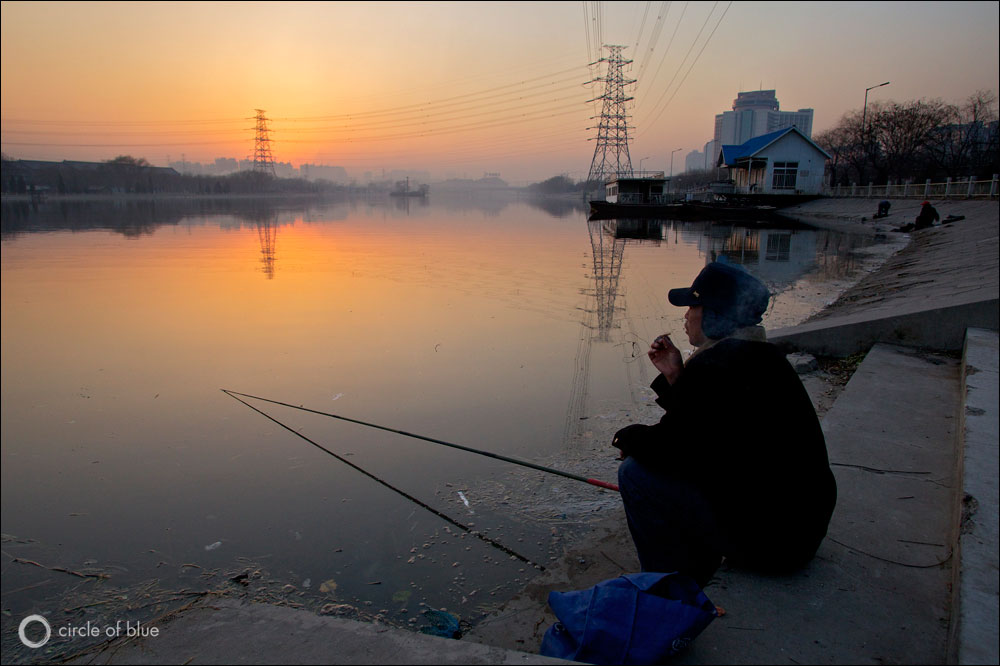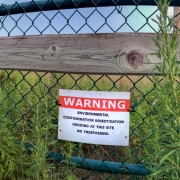A FOIA Saga
The long road to information about a federal study of fracking’s effect on groundwater in Wyoming.

My first Freedom of Information Act request with the U.S. Environmental Protection Agency has taken some odds turns.
To begin with, the EPA’s Office of Research and Development, in its transition to an online FOIA system, lost my request. That led to a delay.
Then the office’s FOIA coordinator died. So another delay.
Now my request is being handled by a third bureaucrat. I’ve been told the documents have been collected and are being reviewed. I should soon get word about an “estimated response time,” but the information is already more than two months late.
The Study
This all started in January when the EPA announced a third extension of the public comment period for its study of groundwater contamination in Pavillion, Wyoming.
Pavillion, population 231, is a whisper of a town, but it is at the heart of a debate about the consequences of the nation’s natural gas boom for drinking water.
The EPA began studying the effect of hydraulic fracturing, or fracking, on the region’s groundwater in 2009. The draft report, released in December 2011, suggested a link between fracking and groundwater contamination. According to the report, “data suggest that enhanced migration of gas has occurred within groundwater at depths used for domestic water supply and to domestic wells.”
In March 2012, the EPA extended the public comment period for the draft study. In October 2012, the agency did it again. Then on January 11, 2013, a third extension was granted, until September 30, 2013.
In effect, the extensions have stalled the study. The EPA will not go forward with a scientific peer review until the public comment period closes, and that comment period is an ever-receding horizon.
In January, I asked Richard Mylott, spokesman for EPA Region 8 which includes Wyoming, about the extension. He sent me the agency’s official – and quite vague – statement:
“EPA has announced an eight month extension to September 30, 2013 for the public comment period of the draft research report titled, “Investigation of Ground Water Contamination near Pavillion, Wyoming.” During this time EPA will continue its public outreach activities including meeting with key stakeholders and posting additional technical information on the agency’s website. This extension will allow the public additional opportunity to comment on EPA’s draft report and the latest round of sampling conducted by EPA and USGS. The Agency will take into account new data, further stakeholder input, and public comment as it continues to review the status of the Pavillion investigation and considers options for moving forward.”
I sent Mylott three follow up questions: What new data are being considered? What options does the EPA need to consider? Can the peer review process happen only after the public comment period ends?
He did not respond.
Since the EPA had already made concessions to Wyoming officials regarding the study, I was not satisfied with the official response. On January 14, I filed a FOIA request asking for any emails about the fracking study from or between the EPA Region 8 press office and the EPA’s Office of Research and Development, whose scientists are collaborating on the study. I asked for messages sent between October 16, 2012 and January 11, 2013, the period after the second extension and before the third extension was announced.
An Associated Press story that broke a few days later, on the EPA bowing to pressure from a gas driller over a contaminated drinking-water well, was an ex post facto justification.
The FOIA Inquiry
My FOIA request was supposed to be completed by February 12. As you know, that did not happen.
Region 8, to its credit, was prompt. I received documents from its office on time. In this case the documents amounted to just one email alerting the press office to the extension and an attachment that outlined the press office’s talking points. The talking points mirrored the statement I received from Richard Mylott.
At the same time in early February, Johanna Miller of the Region 8 press office alerted me to the fact that the Office of Research and Development (ORD), in the transition to a fully online FOIA system, had lost my request. The office was asking for a 10-day extension, which I granted.
When that deadline passed unheeded, I called Robert Parker, my new contact at Region 8. He told me on March 20 that the FOIA coordinator at ORD had died.
Two weeks ago I received a message from Kami Nolte at ORD who said the office was searching its records and would soon be in touch. Yesterday she said that ORD has finished its search and is reviewing the documents.
Clear As Mud
President Barack Obama entered office claiming that his administration would create “an unprecedented level of openness in government.”
My interactions with the EPA have been frustrating, time-consuming, fruitless – lots of adjectives, but rarely ever “open”. EPA press officers routinely fail to connect me with agency scientists and policymakers. They miss deadlines, even with significant lead time. When it does arrive, a response is usually a lot of PR gibberish, saying very little.
The Society of Environmental Journalists (SEJ), of which I am a member, raised these same questions in an op-ed earlier this month that coincided with the nomination hearings for Gina McCarthy, President Obama’s choice to replace Lisa Jackson as the head of the EPA.
“Media policies were substantially eroded during the administration of George W. Bush, and they’ve only gotten worse under President Obama,” claim Beth Parke, executive director of SEJ and Joseph Davis, who directs SEJ’s Freedom of Information Watchdog program.
The Freedom of Information Act is an important tool to keep government honest. My request could reveal some EPA chicanery; or, it could confirm that the agency is being tight-lipped but diligent in its efforts to get the best possible data for a closely watched study.
Either way, given the Obama administration’s track record, the act is more necessary than ever – even if its wheels turn slowly.
Brett writes about agriculture, energy, infrastructure, and the politics and economics of water in the United States. He also writes the Federal Water Tap, Circle of Blue’s weekly digest of U.S. government water news. He is the winner of two Society of Environmental Journalists reporting awards, one of the top honors in American environmental journalism: first place for explanatory reporting for a series on septic system pollution in the United States(2016) and third place for beat reporting in a small market (2014). He received the Sierra Club’s Distinguished Service Award in 2018. Brett lives in Seattle, where he hikes the mountains and bakes pies. Contact Brett Walton









Leave a Reply
Want to join the discussion?Feel free to contribute!